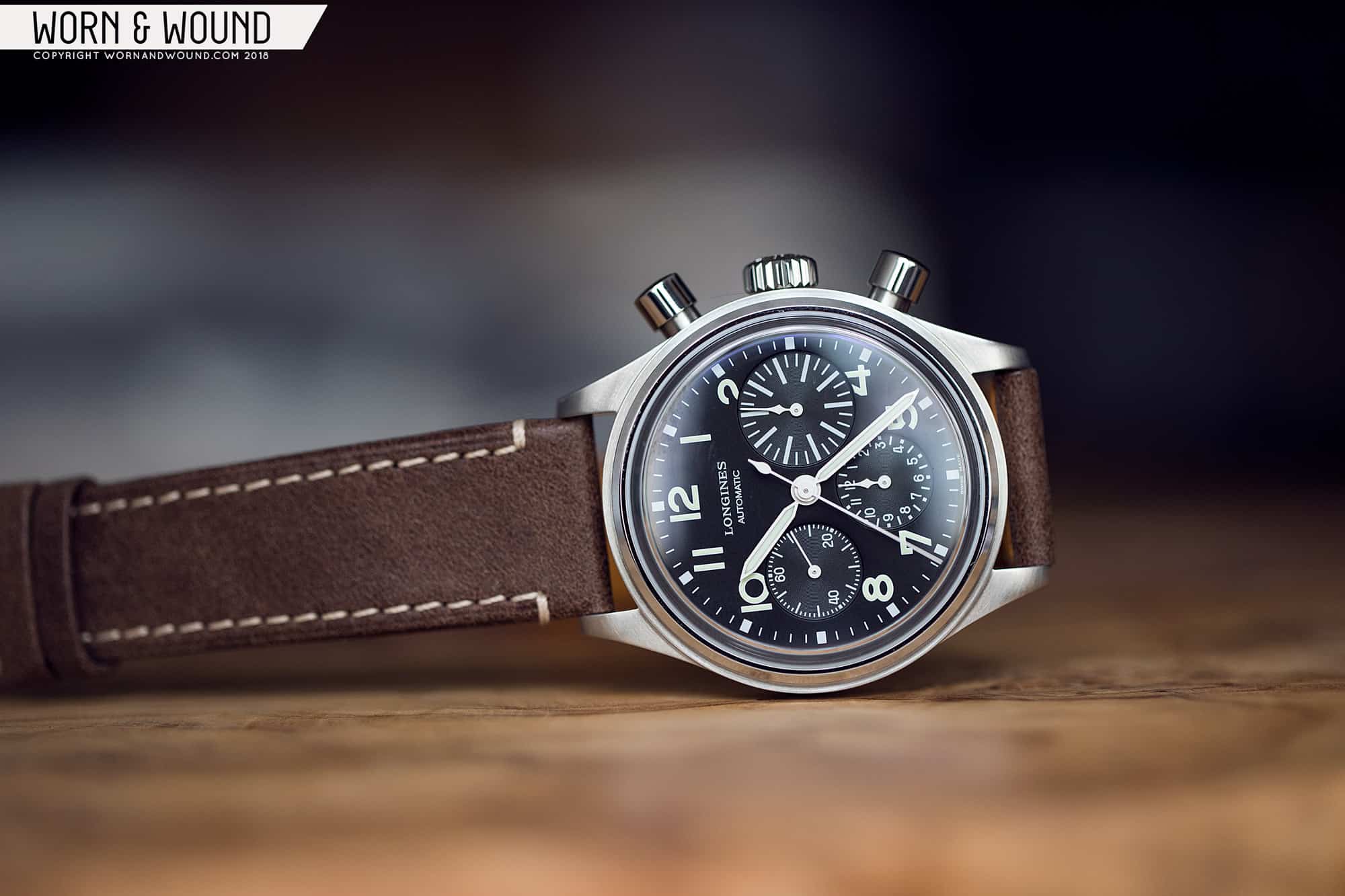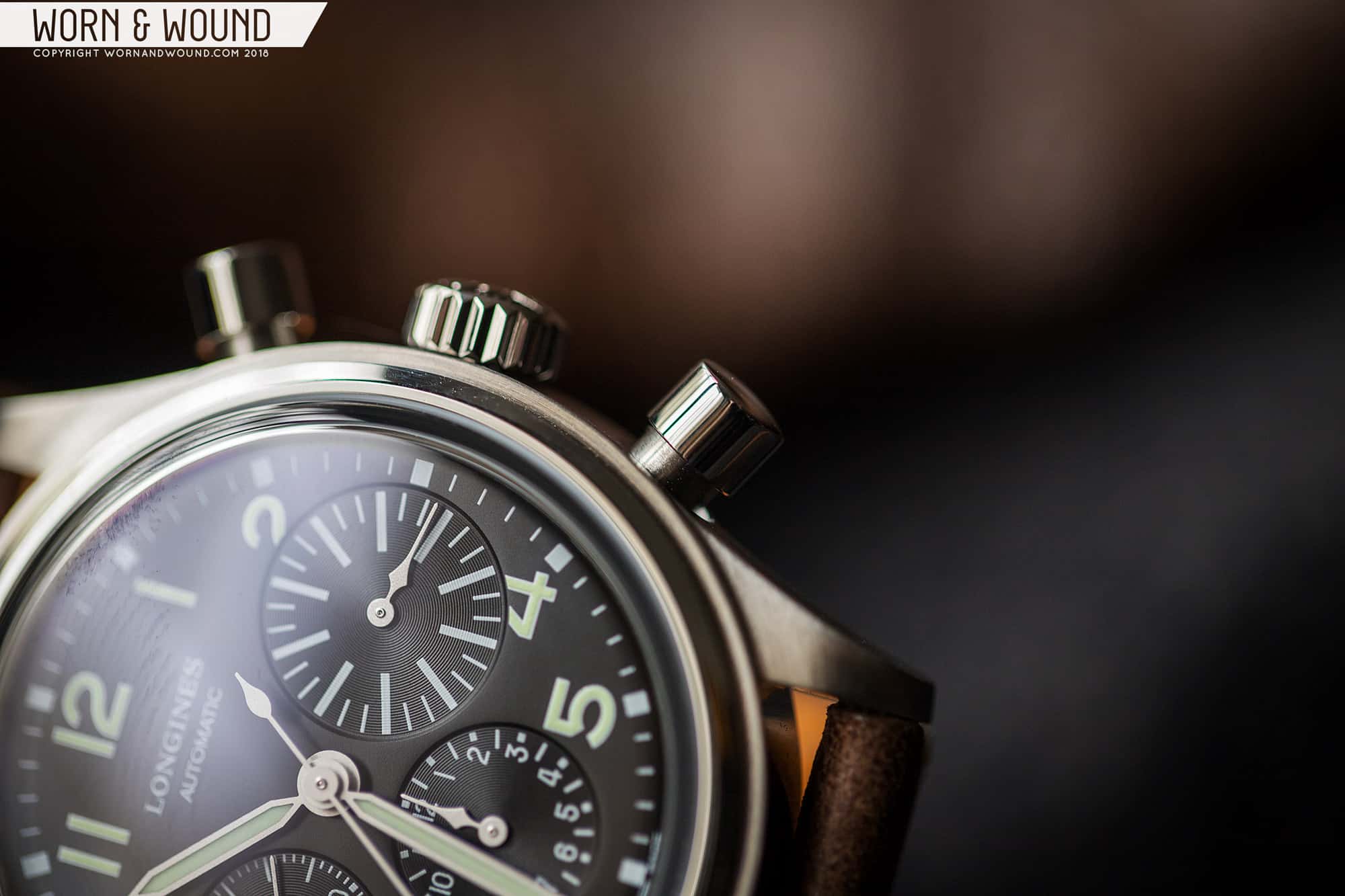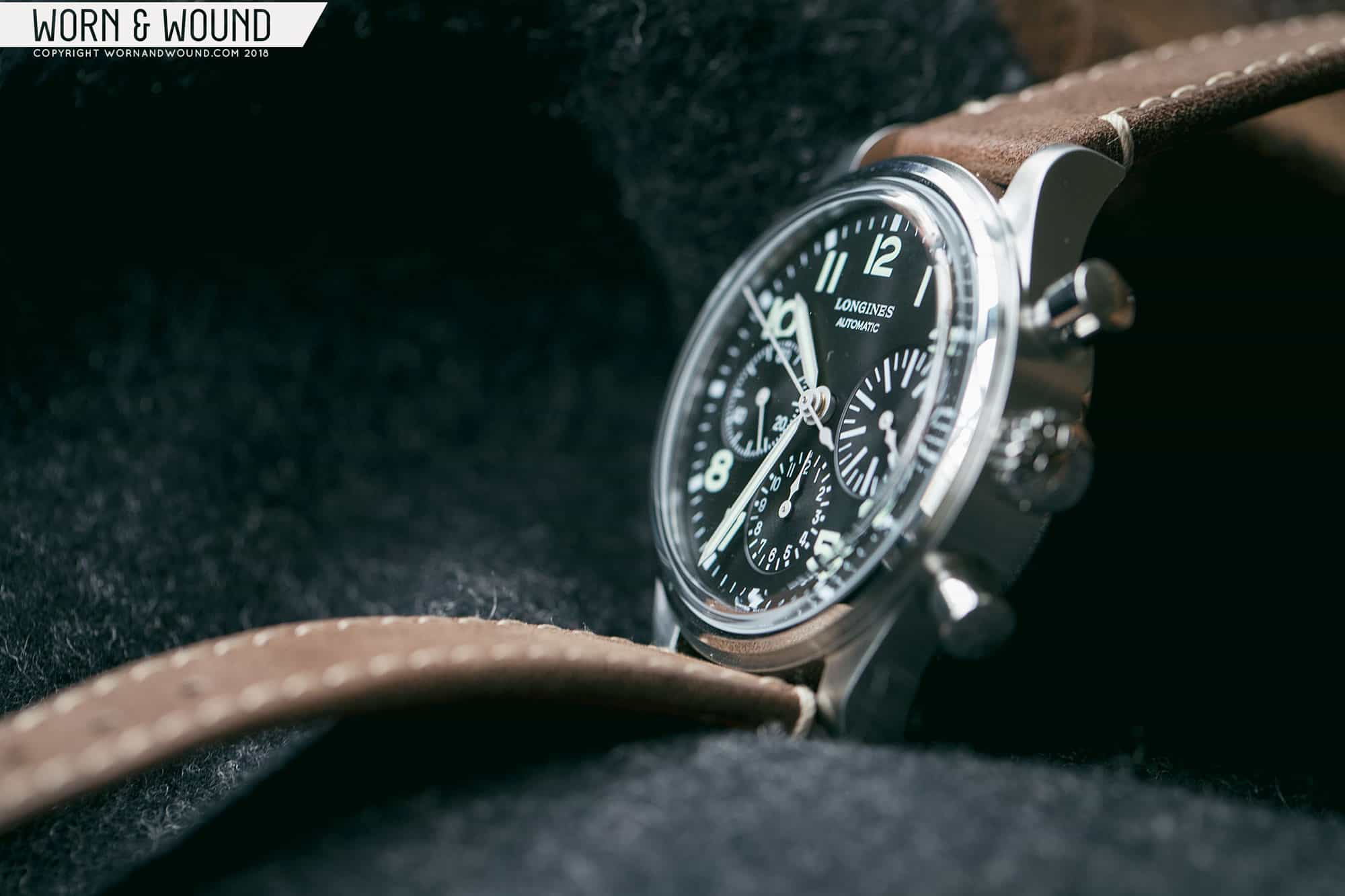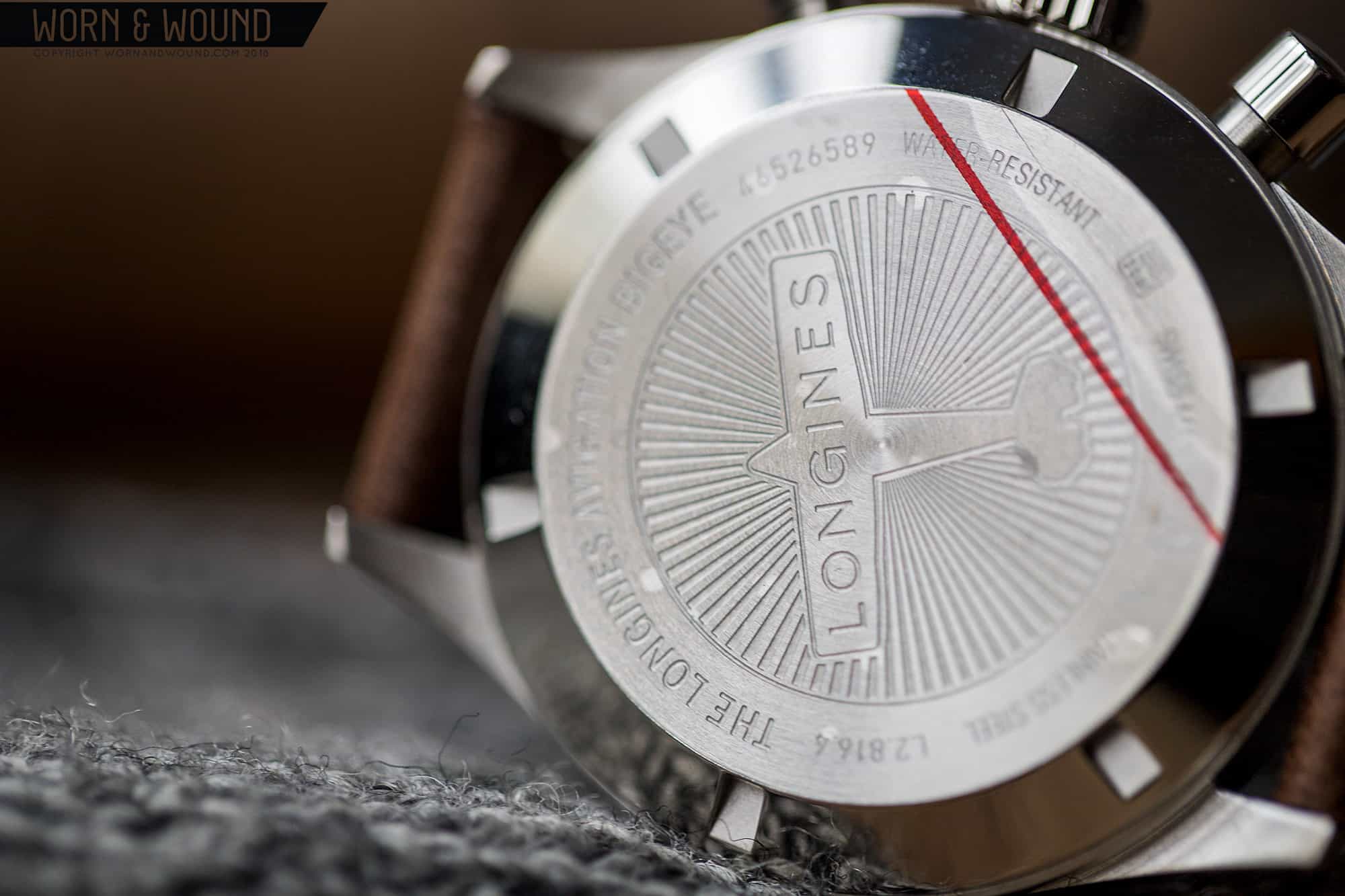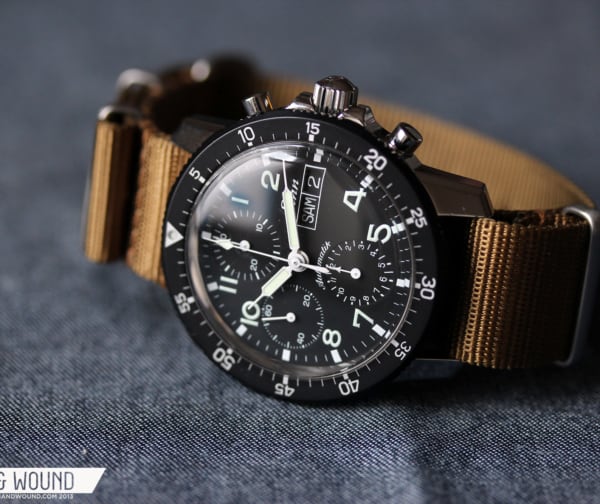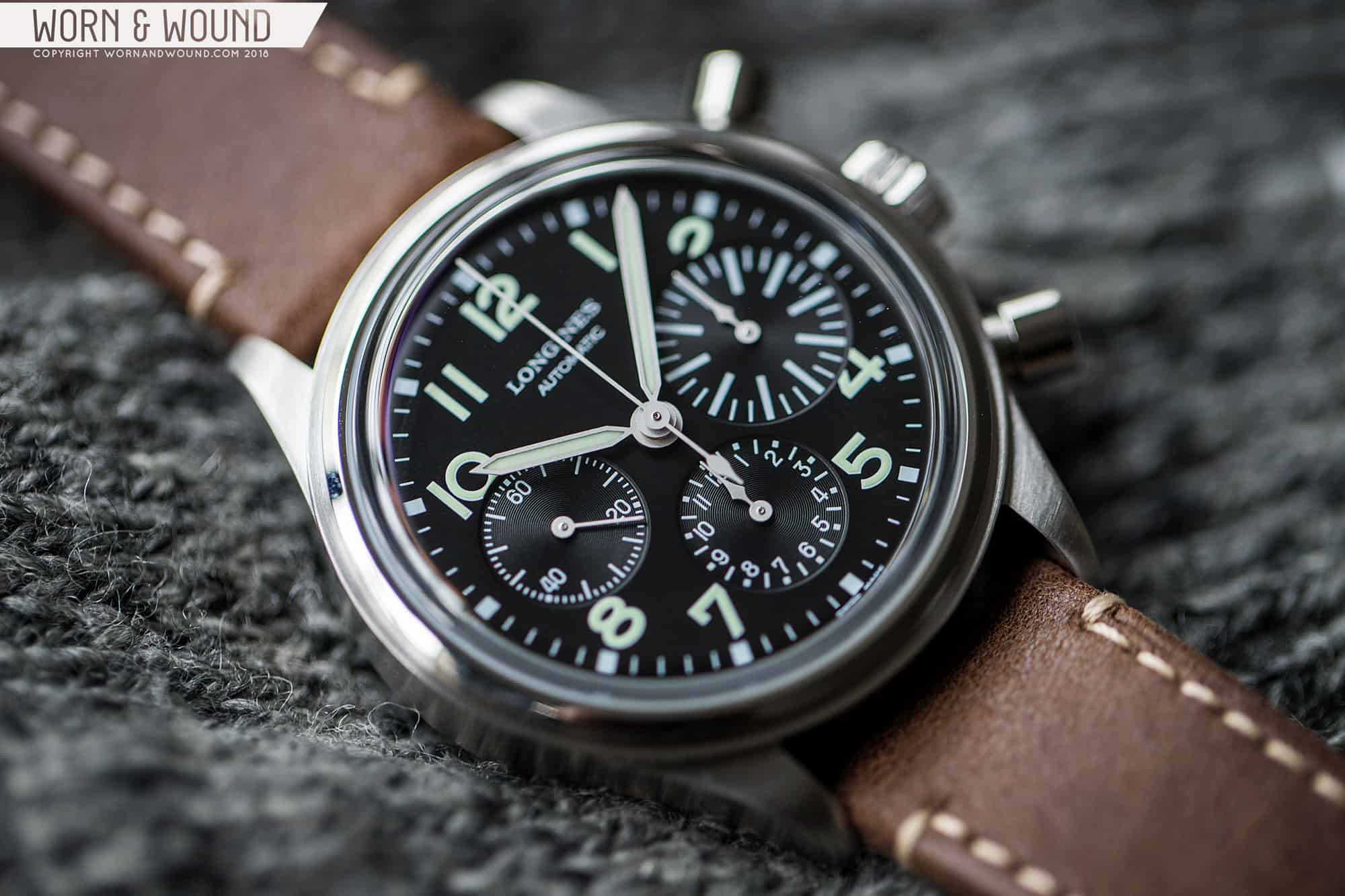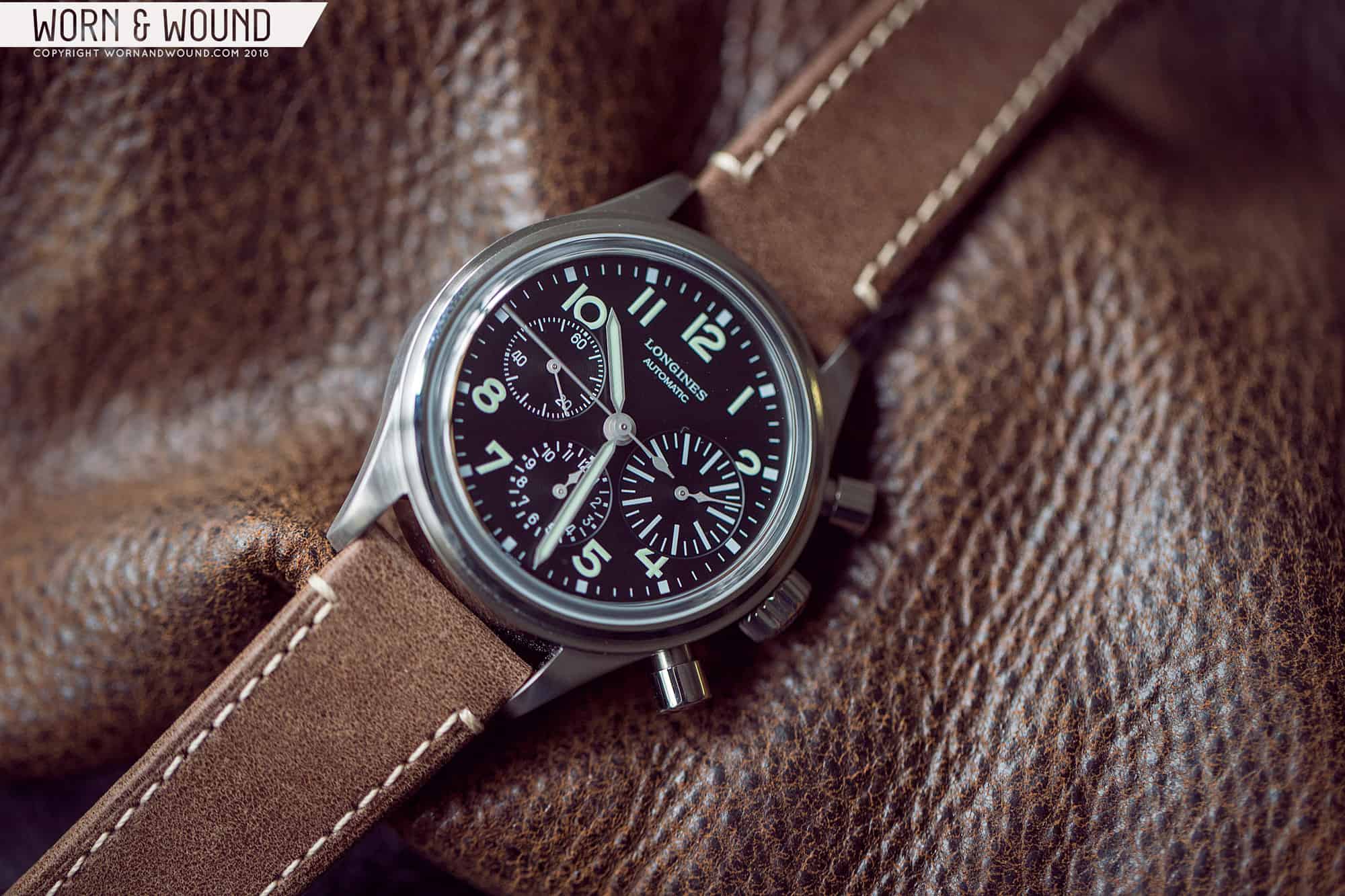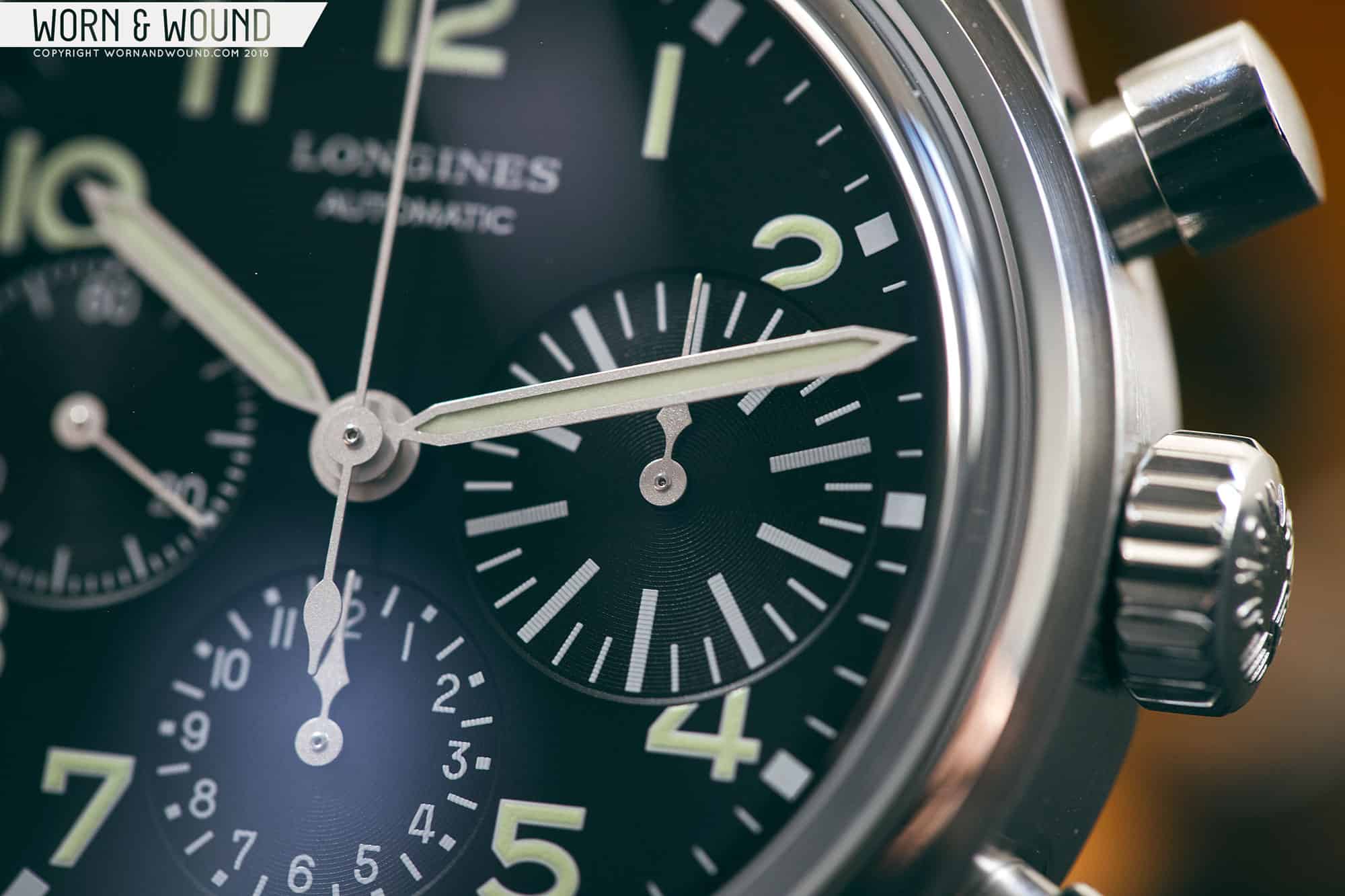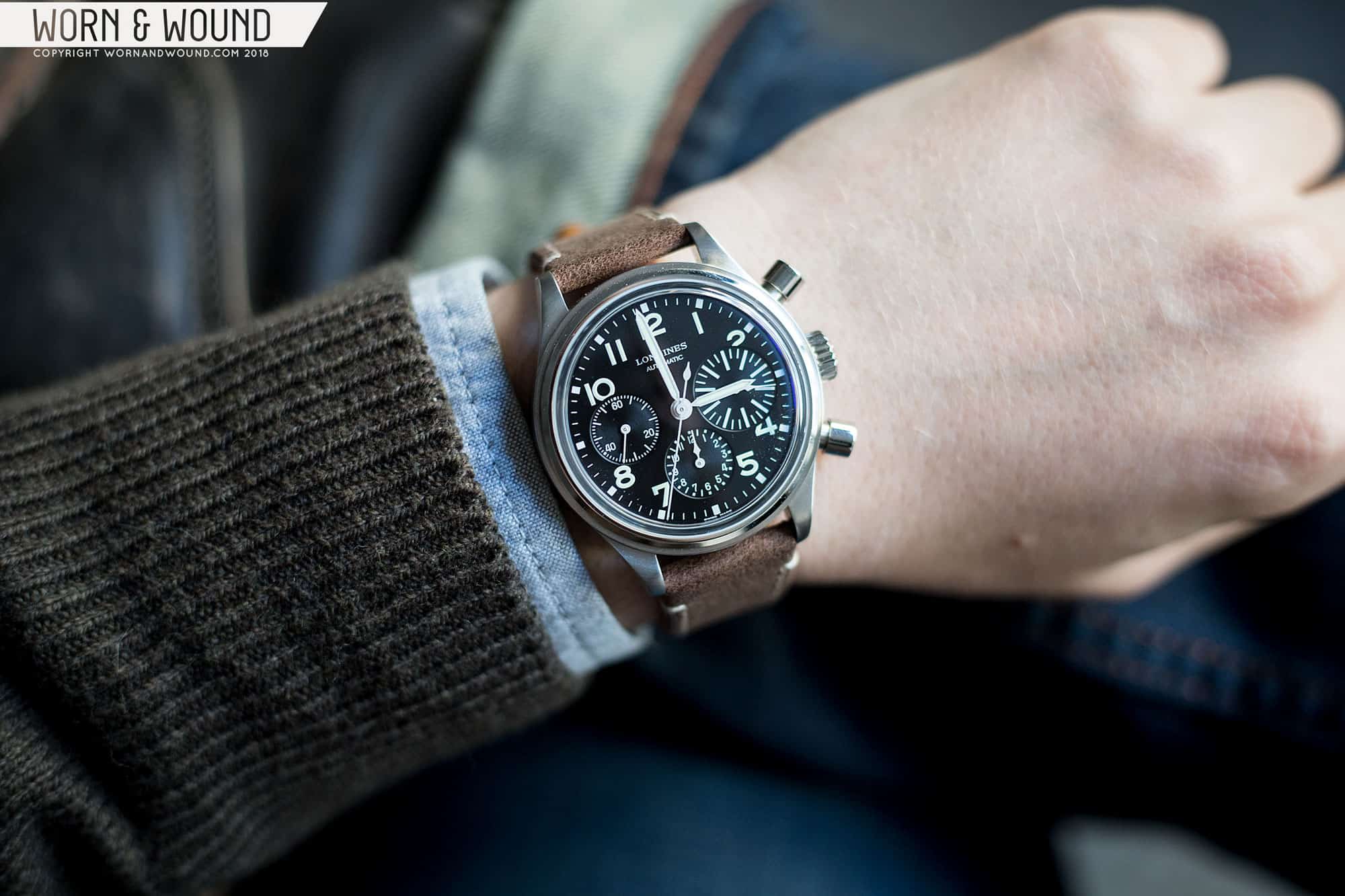It was some day around the chaos of Baselworld 2017 that on Instagram, on some account we can’t quite recall, we spotted a Longines chronograph that we had never seen before and one that hadn’t been shown at Basel. It was a military chronograph with what looked like an intriguing asymmetrical dial design and a modestly sized case. But we couldn’t find anything else about it, and then it was gone. Then in September of last year, Longines officially announced the Avigation BigEye Chronograph, and it was an immediate hit.
Clearly a vintage-inspired design, the Avigation BigEye has all the trappings of a classic military watch—big numerals on a black dial, a focus on legibility, and simple hands. What it also has is a personality thanks to the eponymous feature of an oversized sub-dial. It’s a rare detail on watches—watches both modern and vintage—and the emphasis of the minutes counter changes the dynamic of the watch greatly, making it stand out from other similar watches.
Part of their heritage line, the Longines Avigation BigEye Chronograph has a curious history. Well, it actually doesn’t have much of a history at all, and the story is a bit murky. A collector brought the watch to Longines, which is to say it wasn’t in their archives. They loved the design, made a modern interpretation, and voilá, here we are today. But what of that original watch?
There is conflicting information out there, placing the production of that watch anywhere from the 1930s to the ’70s. Visually, it seems to be somewhere in the middle, having some elements of early-20th century designs and some from the mid. One simple thing to consider is that other big eye chronographs, such as the Type-20s by Breguet and JLC, the Uni-Compax by Universal Genève, and even watches from Longines themselves date from at least the ’50s and go as late as the ’70s.
So, what is this watch? Well, who knows, but I like it regardless. That’s sort of a cop out, I know, but the reality is, provenance or not, the new Avigation BigEye is a gorgeous watch that is appealing on its own design merits. Even if it simply was a modern watch with historical inspirations, it’s done well and is clearly a standout of the brand’s current line up. Beyond design, the watch comes packing Longines’ L688.2 movement, which is an automatic, column-wheel chronograph based on the 7750. It’s a great movement that usually commands a bit of a premium, but in this instance the watch has been priced at $2,625 (MSRP), marking a new entry point for the caliber and giving the package a solid overall value.









 Featured Videos
Featured Videos




